Search Result
Results for "
microglia
" in MedChemExpress (MCE) Product Catalog:
2
Isotope-Labeled Compounds
| Cat. No. |
Product Name |
Target |
Research Areas |
Chemical Structure |
-
- HY-N3915
-
|
|
Others
|
Neurological Disease
Inflammation/Immunology
|
|
Futoquinol is a neolignan isolated from the dried aerial parts of Piper kadsura (Piperaceae). Futoquinol potently inhibits NO production in microglia cells. Futoquinol has anti-neuroinflammatory activities .
|
-

-
- HY-N10386
-
-
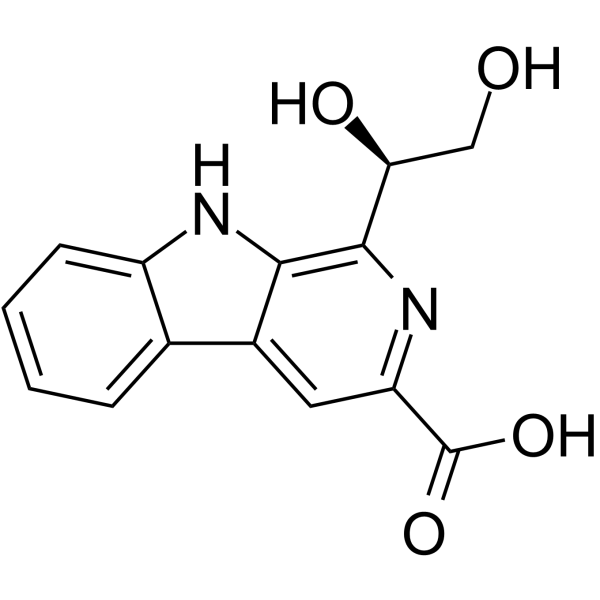
-
- HY-P5762
-
|
PNX-14
|
GnRH Receptor
|
Neurological Disease
|
|
Phoenixin-14 (PNX-14) is one of the endogenous active isoform, and generates anxiolytic effect via the activation of the AHA GnRH system in mice. Phoenixin-14 inhibits ischemia/reperfusion-induced cytotoxicity in microglia .
|
-
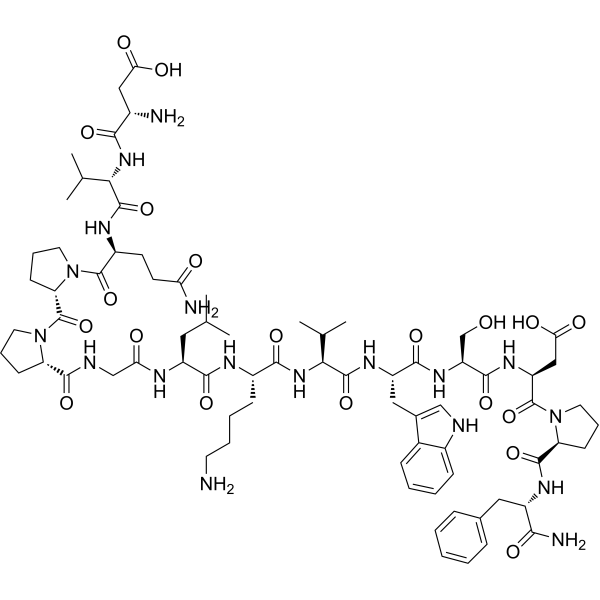
-
- HY-123506
-
|
|
Src
|
Neurological Disease
Inflammation/Immunology
|
|
Fenlean, a natural squamosamide derivative, is a Src tyrosine kinase inhibitor. Fenlean can inhibit over-activated microglia and protect dopaminergic neurons. Fenlean can attenuate neuroinflammation in Parkinson's disease models .
|
-
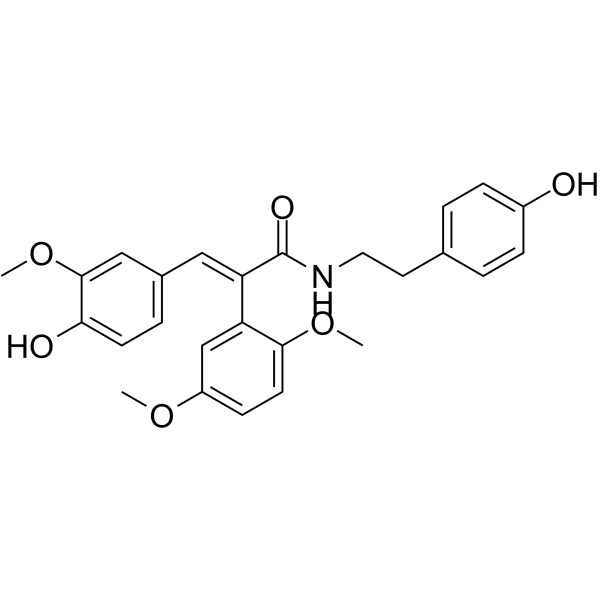
-
- HY-108654
-
|
|
P2Y Receptor
Apoptosis
|
Neurological Disease
|
|
PSB 0474 (3-phenacyl-UDP) is a selective and potent P2Y6 receptor agonist with an EC50 of 70 nM . PSB 0474 inhibits cell proliferation, increases NO release in astrocytes and microglia cells. PSB 0474 induces astrocytes apoptosis .
|
-

-
- HY-157430
-
|
|
Epigenetic Reader Domain
|
Neurological Disease
|
|
BET-IN-21 (compound 16) is a blood-brain barrier-permeable extra terminal domain (BET) inhibitor with the Ki of 230 nM. BET-IN-21 inhibits microglia activation and has ameliorative effects on experimental autoimmune encephalomyelitis mice .
|
-
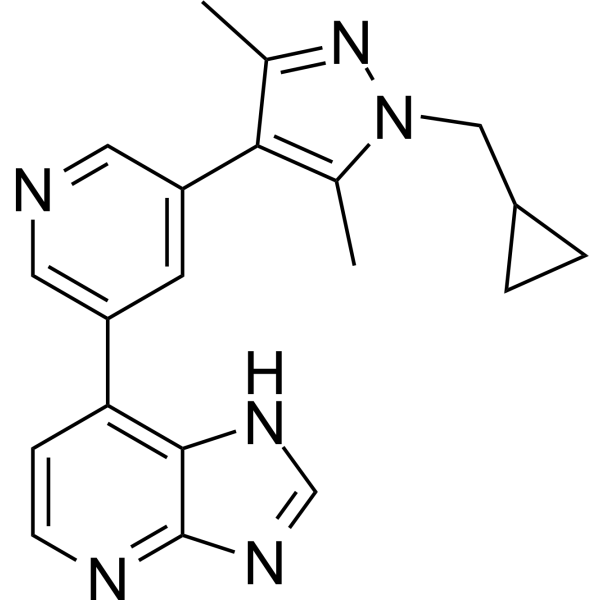
-
- HY-155762
-
-
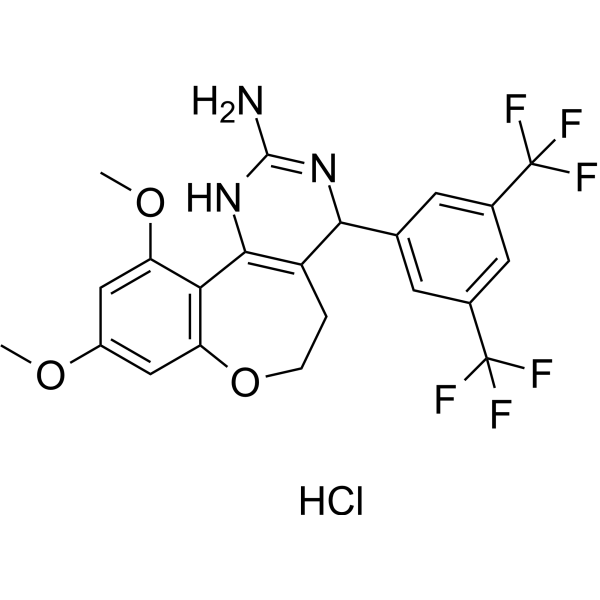
-
- HY-W670564A
-
|
|
Others
|
Neurological Disease
|
|
(4S)-10-Nor-calamenen-10-one (Compound 15) enhances LPS-induced NO production by microglia. (4S)-10-Nor-calamenen-10-one is an eudesmane sesquiterpene that can be isolated from Alpinia oxyphylla .
|
-
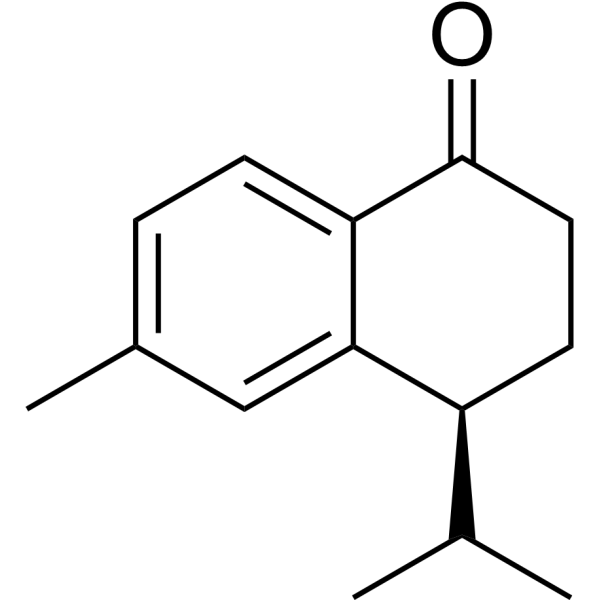
-
- HY-146765
-
|
|
NOD-like Receptor (NLR)
|
Neurological Disease
Inflammation/Immunology
|
|
AMS-17 is a potent NLRP3 inhibitor, inhibiting microglia activation in vitro and in vivo. AMS-17 also inhibits cytokines such as caspase-1, TNF-α, IL-1β and inducible nitric oxide synthase (iNOS) in N9 cells. AMS-17 can be used for researching inflammation-associated neurological disorders .
|
-

-
- HY-15381
-
|
FTY720 phosphate
|
LPL Receptor
|
Infection
Neurological Disease
Inflammation/Immunology
|
|
Fingolimod phosphate (FTY720 phosphate) is an orally active sphingosine 1-phosphate (S1P) receptor agonist. Fingolimod phosphate can promote the neuroprotective effects of microglia. Fingolimod phosphate can be used for the research of multiple sclerosis and neurologic diseases .
|
-
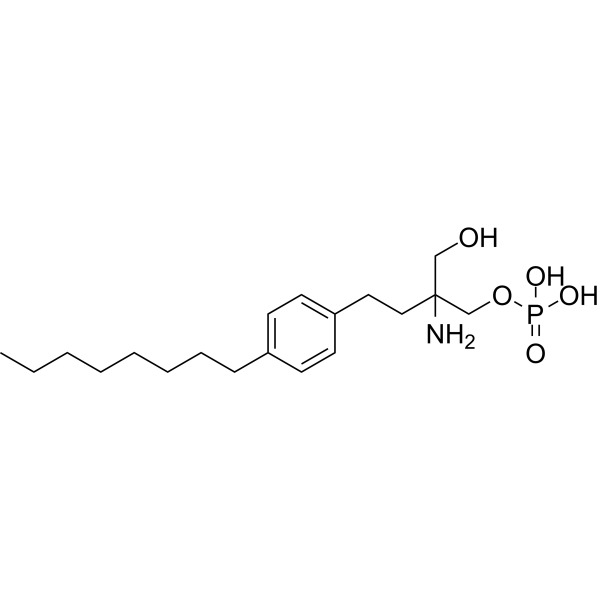
-
- HY-144399
-
|
|
Others
|
Neurological Disease
|
|
CD33 splicing modulator 1 (Compound 1) is a CD33 splicing modulator. CD33/Siglec 3 is a myeloid lineage cell surface receptor that is known to regulate microglia activity. CD33 splicing modulator 1 increases exon 2 skipping in cellular mRNA pools. CD33 splicing modulator 1 has the potential for the research of neurodegenerative disease including Alzheimer's disease .
|
-
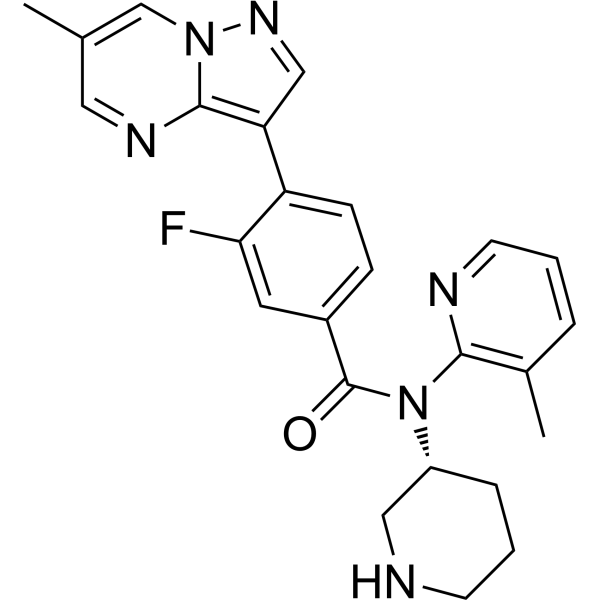
-
- HY-144399A
-
|
|
Others
|
Neurological Disease
|
|
CD33 splicing modulator 1 (Compound 1) hydrochloride is a CD33 splicing modulator. CD33/Siglec 3 is a myeloid lineage cell surface receptor that is known to regulate microglia activity. CD33 splicing modulator 1 hydrochloride increases exon 2 skipping in cellular mRNA pools. CD33 splicing modulator 1 hydrochloride has the potential for the research of neurodegenerative disease including Alzheimer's disease .
|
-
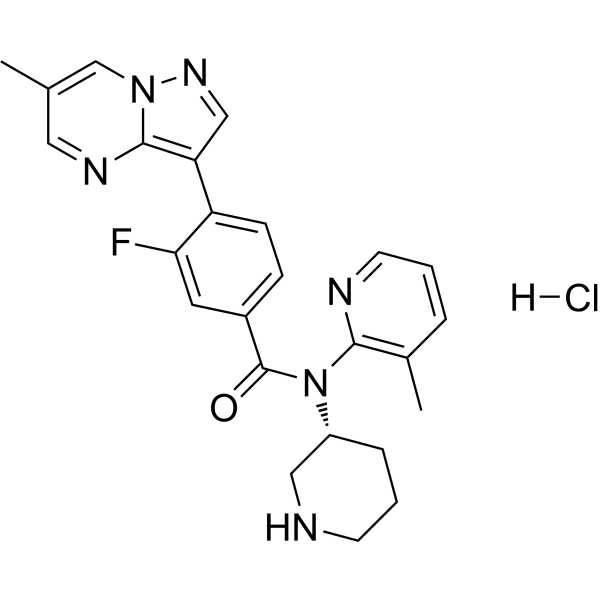
-
- HY-B1197
-
-

-
- HY-N10458
-
|
|
NF-κB
|
Inflammation/Immunology
|
|
Asperbisabolane L, a sesquiterpenoid, exerts the anti-inflammatory activity by inhibiting the NF-κB-activated pathway. Asperbisabolane L inhibits the translocation of NF-κB from cytoplasm to the nucleus. Asperbisabolane L also inhibits NO production in LPS-activated BV-2 microglia cells .
|
-
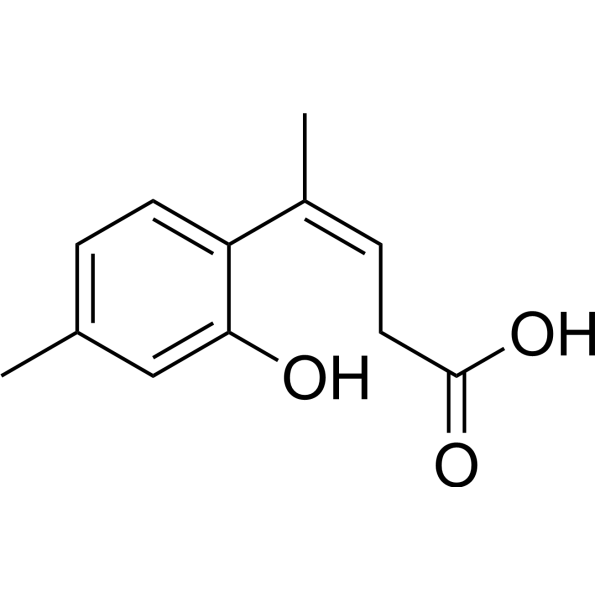
-
- HY-P5544A
-
|
N-Acetylmuramyl-L-Ala-γ-D-Glu-meso-diaminopimelic acid TFA
|
NOD-like Receptor (NLR)
|
Others
|
|
M-TriDAP (N-Acetylmuramyl-L-Ala-γ-D-Glu-meso-diaminopimelic acid) TFA is a NOD1/2 agoist and biological active peptide .
|
-
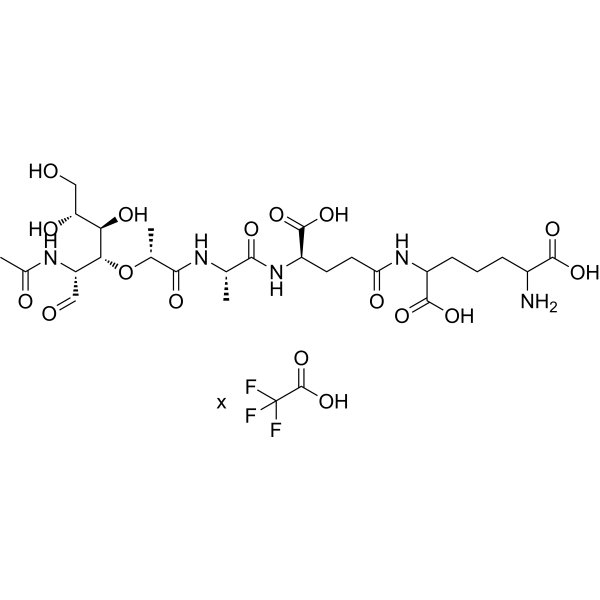
-
- HY-121035
-
|
7-Bromoindirubin-3-Oxime
|
CDK
GSK-3
|
Neurological Disease
|
|
7BIO (7-Bromoindirubin-3-Oxime) is the derivate of indirubin. 7BIO (7-Bromoindirubin-3-Oxime) has inhibitory effects against cyclin-dependent kinase-5 (CDK5) and glycogen synthase kinase-3β (GSK3β). 7BIO (7-Bromoindirubin-3-Oxime) inhibits Aβ oligomer-induced neuroinflammation, synaptic impairments, tau hyper-phosphorylation, activation of astrocytes and microglia, and attenuates Aβ oligomer-induced cognitive impairments in mice [1].
|
-
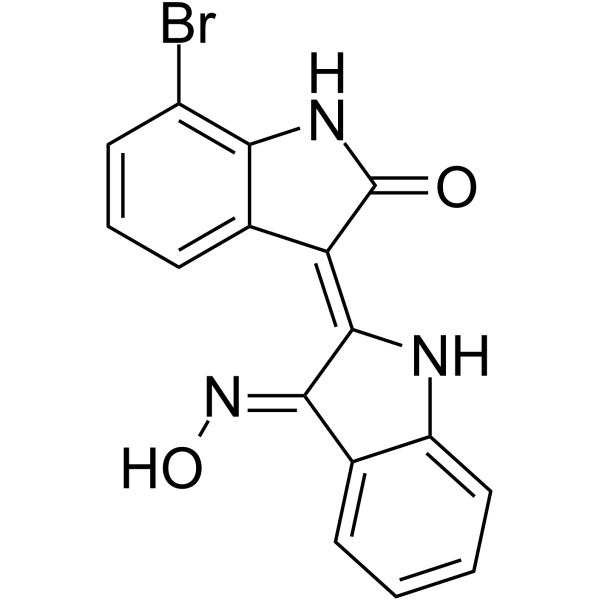
-
- HY-149246
-
|
|
Amyloid-β
Keap1-Nrf2
|
Neurological Disease
Inflammation/Immunology
|
|
Aβ-IN-6 reduces pro-inflammatory cytokine release from microglia cells. Aβ-IN-6 significantly induces Nrf2 nuclear translocation and hamperes Aβ oligomers formation. Aβ-IN-6 exerts a consistent neuroprotective effect by modulating the redox-sensitive signalling pathways in vivo oxidative stress model. Aβ-IN-6 is an orally active and has antiinflammatory, Antioxidant and Anti-oligomeric activity. Aβ-IN-6 has the potential for Alzheimer's disease (AD) research .
|
-

-
- HY-N7018
-
|
|
Others
|
Inflammation/Immunology
|
|
20-Hydroxyganoderic Acid G is a lanostane triterpenoid obtained from the EtOH extract of fruiting bodies of the Ganoderma curtisii. 20-Hydroxyganoderic Acid G inhibits BV-2 microglia cells activated by LPS with an IC50 of 21.33 μM. 20-Hydroxyganoderic Acid G has therapeutic potential in the agent discovery of nerve inflammation diseases associated with microglia activated by LPS .
|
-
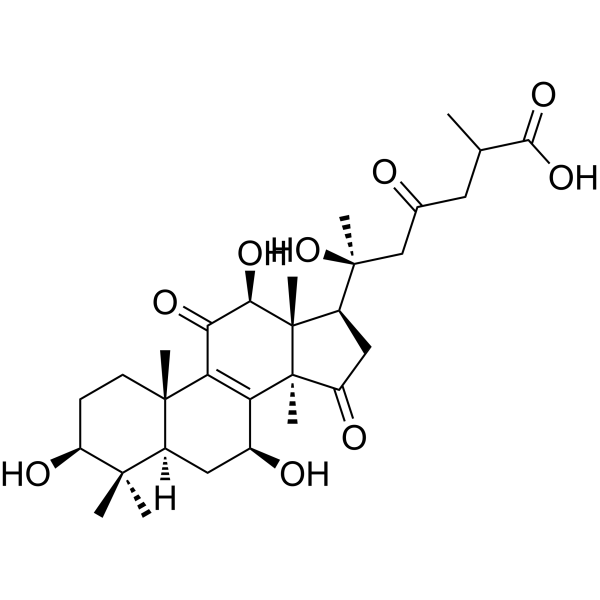
-
- HY-N10782
-
-
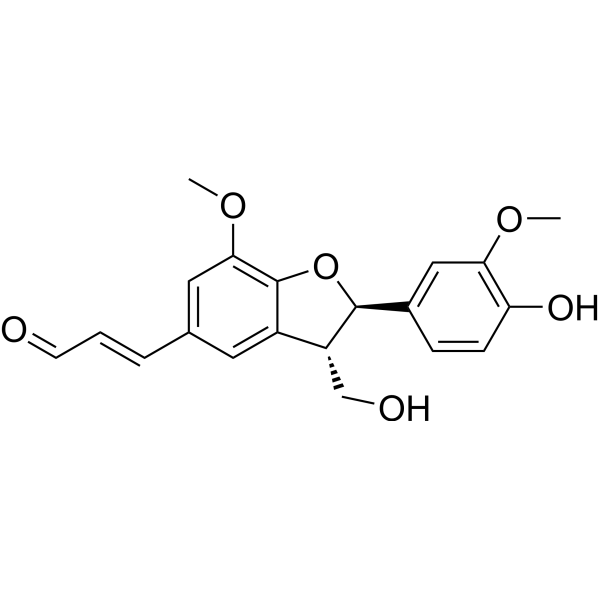
-
- HY-B0763S1
-
|
|
Isotope-Labeled Compounds
Phosphodiesterase (PDE)
|
Inflammation/Immunology
Cancer
|
|
Ibudilast-d7 is the deuterium labeled Ibudilast. Ibudilast (KC-404; AV-411; MN-166) is a cyclic AMP phosphodiesterase (PDE) inhibitor. Ibudilast has platelet anti-aggregatory effects. Ibudilast can be used for the research of asthma for its inhibitory effects on tracheal smooth muscle contractility. Ibudilast may be a useful neuroprotective and anti-dementia agent counteracting neurotoxicity in activated microglia[1].
|
-
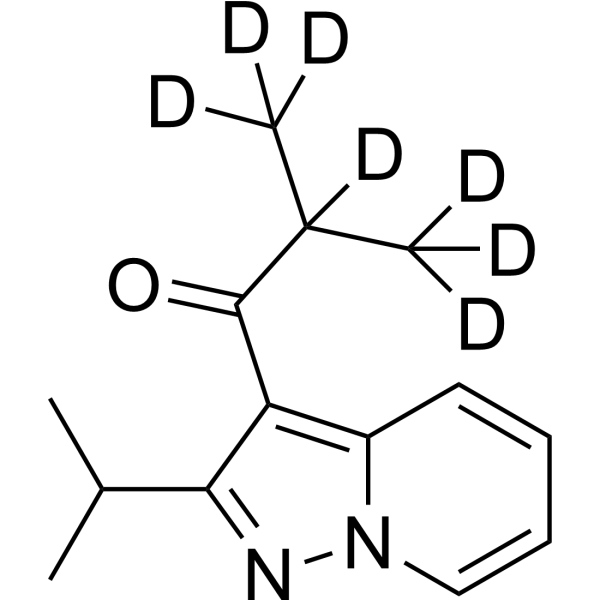
-
- HY-162020
-
-

-
- HY-N9675
-
|
|
NO Synthase
|
Inflammation/Immunology
|
|
(+)-Hannokinol can be isolated from AMOMUM TSAO-KO (ginger family) fruit. (+)-Hannokinol inhibits lipopolysaccharide-induced nitric oxide production in BV2 microglia .
|
-
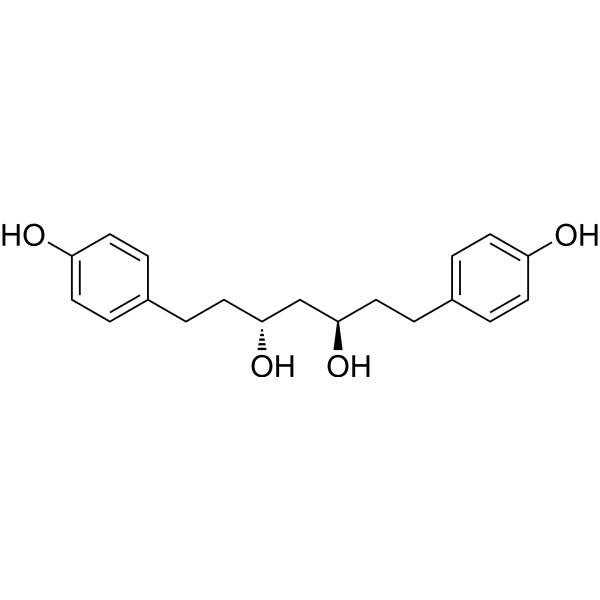
-
- HY-B0763S2
-
|
KC-404-d7-1; AV-411-d7-1; MN-166-d7-1
|
Phosphodiesterase (PDE)
|
|
|
Ibudilast-d7-1 is the deuterium labeled Ibudilast[1]. Ibudilast (KC-404;AV-411;MN-166) is a cyclic AMP phosphodiesterase (PDE) inhibitor. Ibudilast has platelet anti-aggregatory effects. Ibudilast can be used for the research of asthma for its inhibitory effects on tracheal smooth muscle contractility. Ibudilast may be a useful neuroprotective and anti-dementia agent counteracting neurotoxicity in activated microglia[2].
|
-

-
- HY-101860
-
-

-
- HY-112248A
-
-
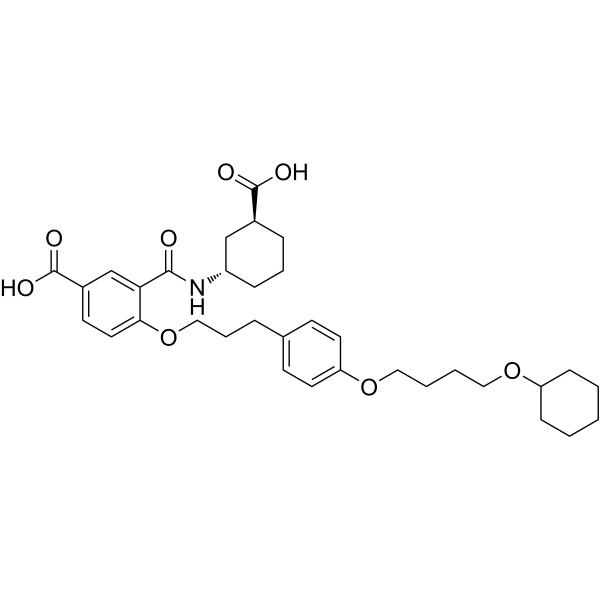
-
- HY-15515
-
SEA0400
Maximum Cited Publications
16 Publications Verification
|
Na+/Ca2+ Exchanger
|
Cardiovascular Disease
|
|
SEA0400 is a novel and selective inhibitor of the Na +-Ca 2+ exchanger (NCX), inhibiting Na +-dependent Ca 2+ uptake in cultured neurons, astrocytes, and microglia with IC50s of from 5 to 33 nM.
|
-

-
- HY-N6261
-
|
|
Others
|
Inflammation/Immunology
|
|
Epimagnolin B is a bisepoxylignan isolated from Magnolia fargesii, with anti-inflammatory activity and antiallergic effects. Epimagnolin B inhibits NO production in LPS-activated microglia. Epimagnolin B exhibited antiallergic effects .
|
-
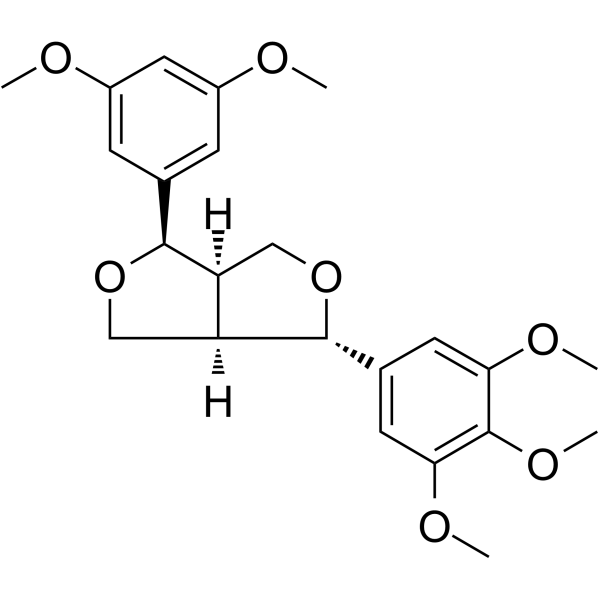
-
- HY-N8104
-
|
|
Others
|
Inflammation/Immunology
|
|
15a-Hydroxy-3,11,23-trioxo-lanost-8,20-dien-26-oic acid, a Lanostane triterpenoid, possesses NO production inhibitory activities of LPS-induced microglia .
|
-
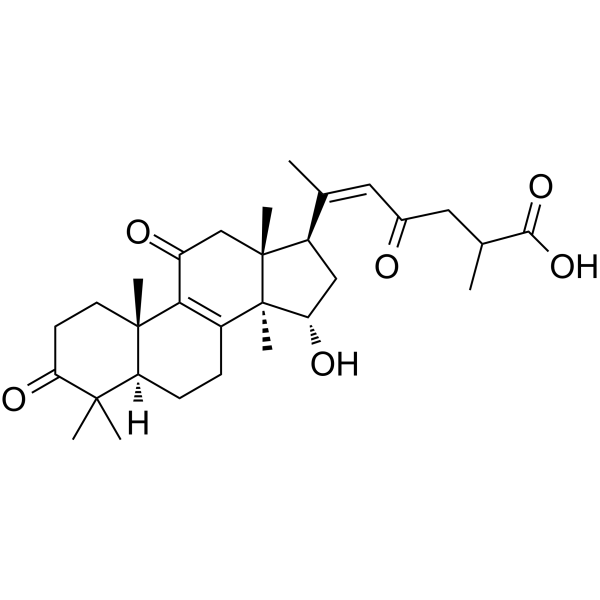
-
- HY-112847
-
|
Sulfo-N-succinimidyl oleate
|
Mitophagy
|
Inflammation/Immunology
|
|
Sulfosuccinimidyl oleate (Sulfo-N-succinimidyl oleate) is a long chain fatty acid that inhibits fatty acid transport into cells. Sulfosuccinimidyl oleate is a potent and irreversible inhibitor of mitochondrial respiratory chain. Sulfosuccinimidyl oleate binds the CD36 receptor on the surface of microglia. Anti-inflammatory effect .
|
-
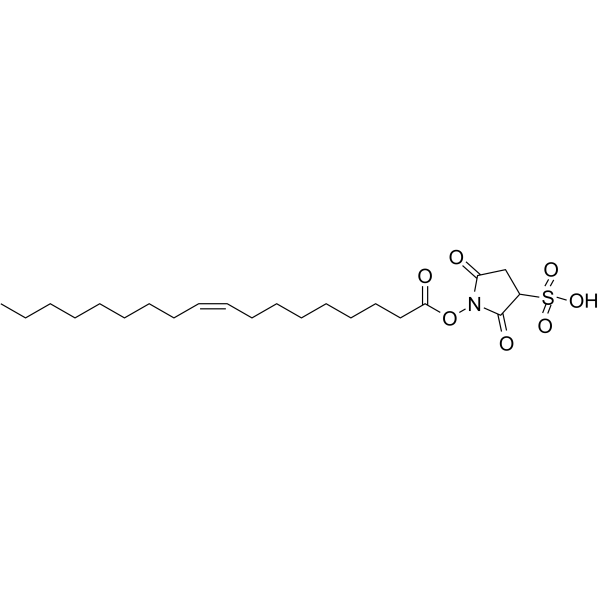
-
- HY-112847A
-
|
Sulfo-N-succinimidyl oleate sodium
|
Mitophagy
|
Inflammation/Immunology
|
|
Sulfosuccinimidyl oleate sodium (Sulfo-N-succinimidyl oleate sodium) is a long chain fatty acid that inhibits fatty acid transport into cells. Sulfosuccinimidyl oleate sodium is a potent and irreversible inhibitor of mitochondrial respiratory chain. Sulfosuccinimidyl oleate sodium binds the CD36 receptor on the surface of microglia. Anti-inflammatory effect .
|
-
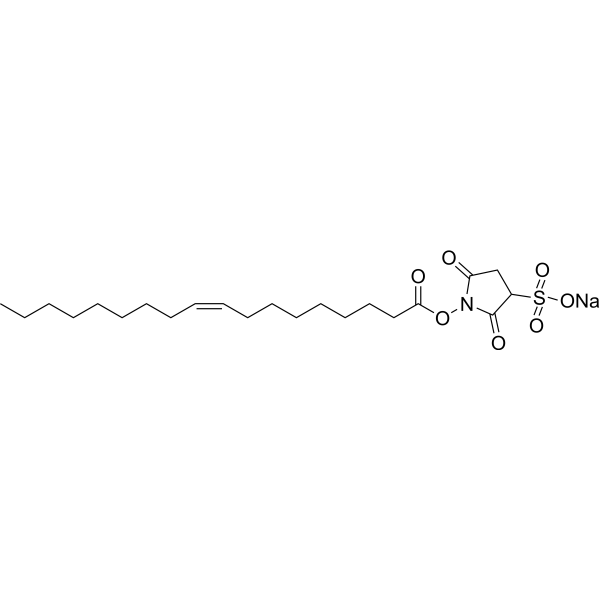
-
- HY-111815A
-
|
ac4CTP sodium
|
Endogenous Metabolite
|
Others
|
|
N4-Acetylcytidine triphosphate sodium is efficiently used as a substrate in T7 Polymerase-catalyzed in vitro
transcription and it can be incorporated into multiple templates .
|
-
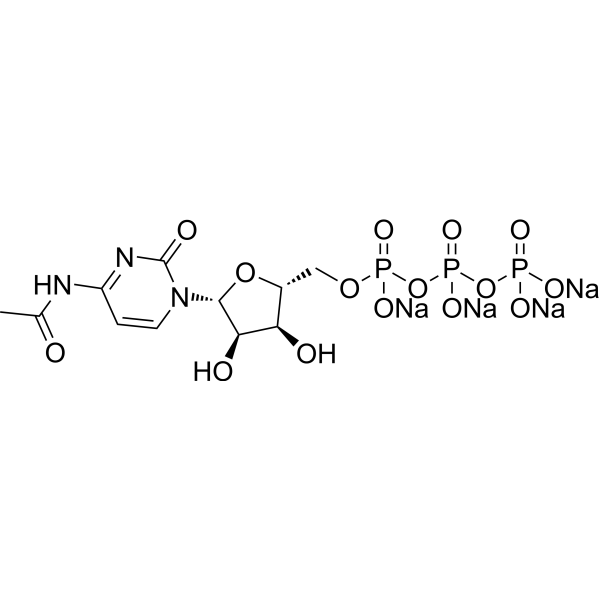
-
- HY-111815
-
|
ac4CTP
|
Endogenous Metabolite
|
Metabolic Disease
|
|
N4-Acetylcytidine triphosphate is efficiently used as a substrate in T7 Polymerase-catalyzed in vitro transcription and can be incorporated into multiple templates .
|
-

-
- HY-N0911
-
|
|
|
|
|
Rehmannioside A is a neuroprotective agent that can be isolated from Rehmanniae radix. Rehmannioside A can inhibit the release of proinflammatory mediators from microglia and promote M2 polarization in vitro, thereby protecting co-cultured neurons from apoptosis by inhibiting NF-κB and MAPK signaling pathways. Rehmannioside A can be used in spinal cord injury research .
|
-

-
- HY-125859A
-
|
MPO
|
Bacterial
|
Inflammation/Immunology
|
|
Myeloperoxidase, human white blood cells (MPO) is a peroxidase. In Myeloperoxidase, human white blood cells mediate oxidative stress by promoting the production of reactive oxygen species (ROS) and active nitrogen (RNS), regulating the polarization and inflammation-related signaling pathways of microglia and neutrophils. Myeloperoxidase, human white blood cells has antibacterial activity .
|
-
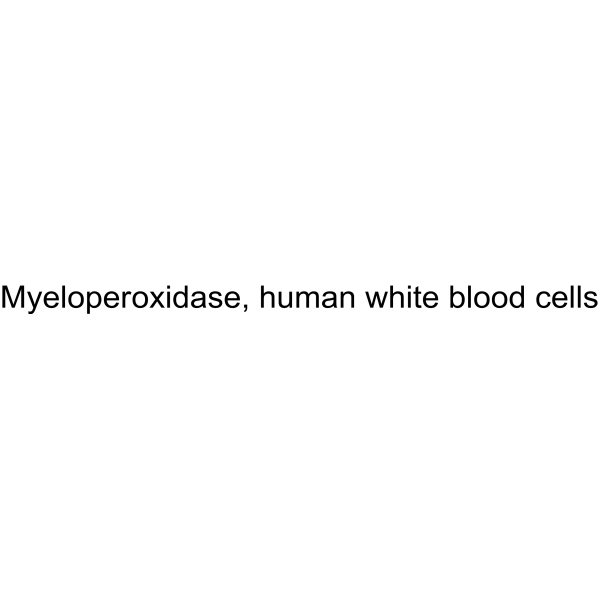
-
- HY-B0763
-
|
KC-404; AV-411; MN-166
|
Phosphodiesterase (PDE)
|
Inflammation/Immunology
Cancer
|
|
Ibudilast (KC-404; AV-411; MN-166) is a cyclic AMP phosphodiesterase (PDE) inhibitor. Ibudilast has platelet anti-aggregatory effects. Ibudilast can be used for the research of asthma for its inhibitory effects on tracheal smooth muscle contractility. Ibudilast may be a useful neuroprotective and anti-dementia agent counteracting neurotoxicity in activated microglia .
|
-
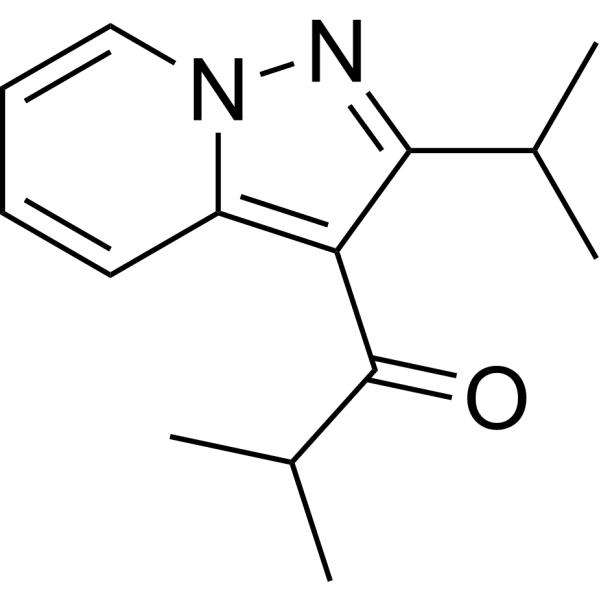
-
- HY-109192
-
|
SAR442168; PRN2246
|
Btk
|
Neurological Disease
|
|
Tolebrutinib (SAR442168) is a potent, selective, orally active and brain-penetrant inhibitor of Bruton tyrosine kinase (BTK), with IC50s of 0.4 and 0.7 nM in Ramos B cells and in HMC microglia cells, respectively. Tolebrutinib exhibits efficacy in central nervous system immunity. Tolebrutinib can be used for the research of multiple sclerosis (MS) .
|
-
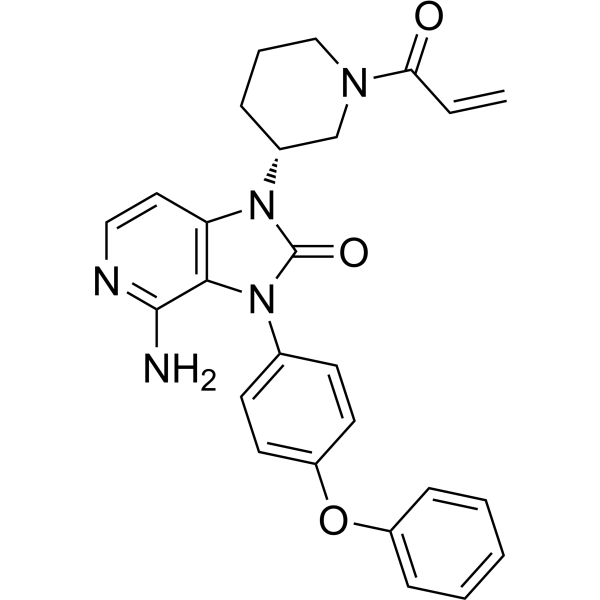
-
- HY-149143
-
|
|
TRP Channel
|
Inflammation/Immunology
|
|
JNJ-28583113 is an TRPM2 antagonist with brain permeability. JNJ-28583113 inhibits TRPM2 blocked phosphorylation of GSK3α and β subunits. JNJ-28583113 protects cells from oxidative stress induced cell death. JNJ-28583113 also suppresses cytokine release in response to pro-inflammatory stimuli in microglia .
|
-
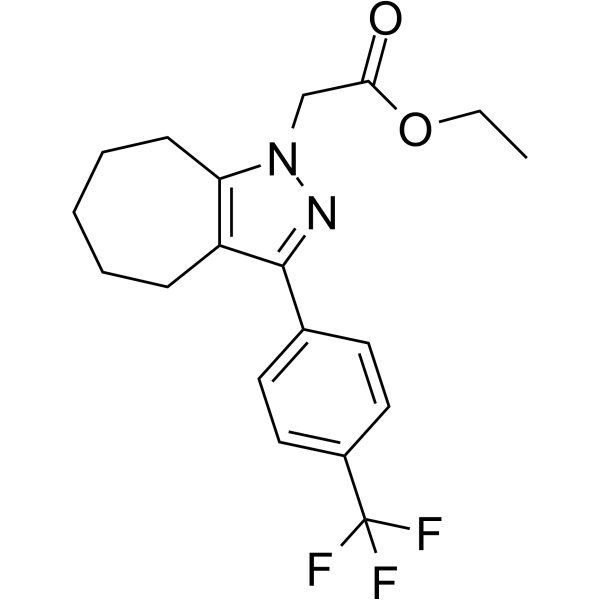
-
- HY-146086
-
|
|
Keap1-Nrf2
Reactive Oxygen Species
|
Neurological Disease
Inflammation/Immunology
|
|
Nrf2 activator-4 (Compound 20a) is a highly potent, orally active Nrf2 activator with an EC50 of 0.63 µM. Nrf2 activator-4 suppresses reactive oxygen species against oxidative stress in microglia. Nrf2 activator-4 effectively recovers the learning and memory impairment in a scopolamine-induced mouse model .
|
-

-
- HY-N3814
-
|
|
Others
|
Inflammation/Immunology
|
|
ent-16β,17-Dihydroxykauran-19-oic acid is an anti-inflammatory agent, which can be isolated from Siegesbeckia pubescens herb. ent-16β,17-Dihydroxykauran-19-oic acid inhibits lipopolysaccharide-induced nitric oxide production in BV2 microglia .
|
-

-
- HY-118828
-
|
12-OPDA
|
NF-κB
p38 MAPK
|
Neurological Disease
Inflammation/Immunology
|
|
12-Oxo phytodienoic acid (12-OPDA) is a plant lipid-derived anti-inflammatory compound. 12-Oxo phytodienoic acid suppresses neuroinflammation by inhibiting Nf-κB and p38 MAPK signaling in LPS-activated cells. 12-Oxo phytodienoic acid can be used for neurodegenerative diseases research .
|
-

-
- HY-N3979
-
-
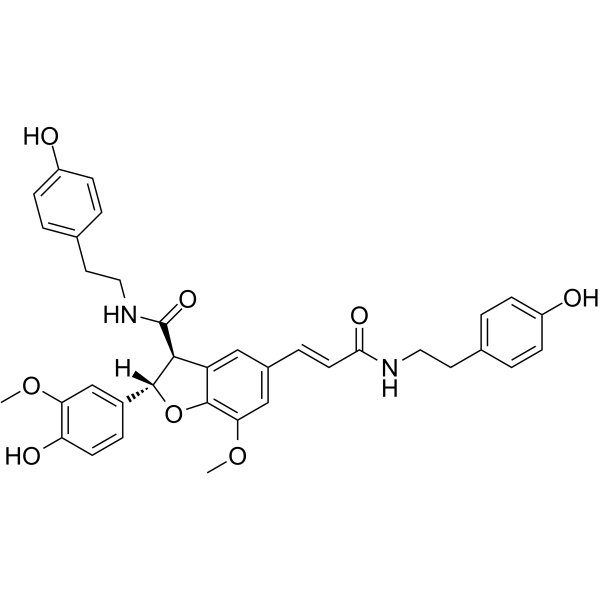
-
- HY-145990
-
|
MF6
|
FABP
|
Inflammation/Immunology
|
|
FABPs ligand 6 (MF6) is an FABP5 and FABP7 inhibitor with KD values of 874 nM and 20 nM, respectively. FABPs ligand 6 can be used for multiple sclerosis research .
|
-
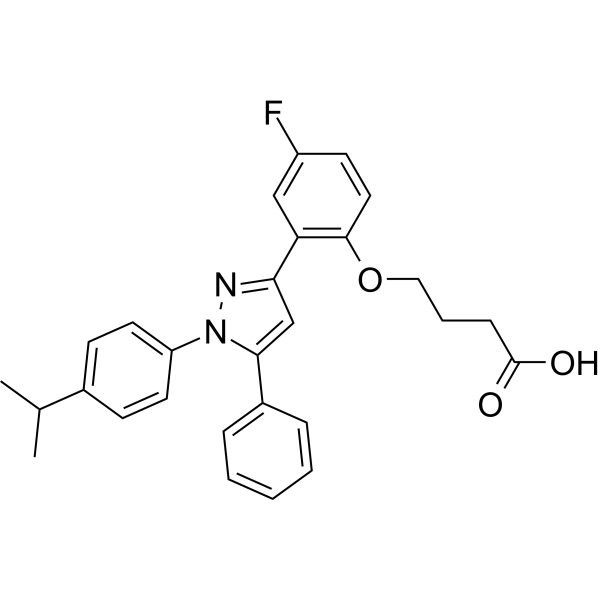
-
- HY-P3908
-
|
|
Amyloid-β
|
Neurological Disease
|
|
FITC-β-Ala-Amyloid β-Protein (1-42) ammonium is a FITC tagged Aβ1-42 monomer peptide. Aβ1-42 plays a key role in the pathogenesis of Alzheimer’s disease .
|
-

-
- HY-111351
-
-
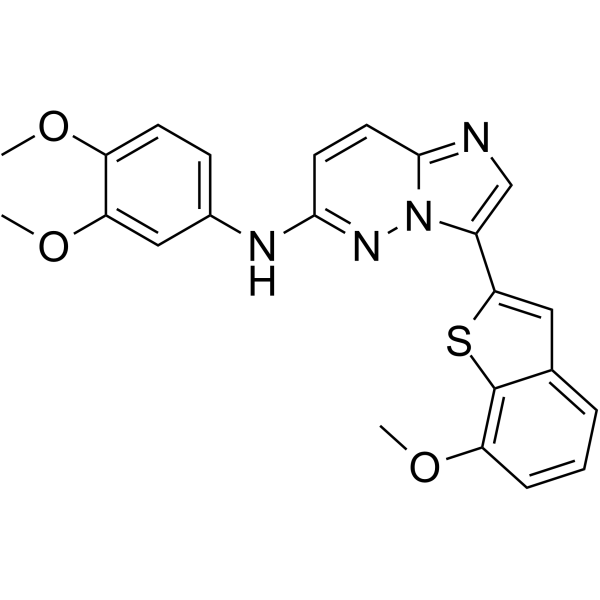
-
- HY-144765
-
|
|
NF-κB
Apoptosis
|
Neurological Disease
Inflammation/Immunology
|
|
NF-κB-IN-4 (compound 17) is a potent and BBB-penetrated NF-κB pathway inhibitor with blood brain barrier (BBB) permeability. NF-κB-IN-4 exhibits potential anti-neuroinflammatory activity with low toxicity. NF-κB-IN-4 can block the activation and phosphorylation of IκBα, reduce expression of NLRP3, and thus inhibit NF-κB activation. NF-κB-IN-4 can be used for neuroinflammation related diseases research .
|
-

-
- HY-149542
-
|
|
Tau Protein
Apoptosis
GSK-3
|
Neurological Disease
|
|
GSK-3β inhibitor 15 (Compound 54) is a GSK-3β inhibitor (IC50: 3.4 nM). GSK-3β inhibitor 15 inhibits Aβ1-42-induced GSK-3β and tau protein phosphorylation. GSK-3β inhibitor 15 inhibits LPS-induced iNOS expression. GSK-3β inhibitor 15 has neuroprotective effects on Aβ1-42-induced neurotoxicity. GSK-3β inhibitor 15 can be used for research of Alzheimer’s disease (AD) .
|
-
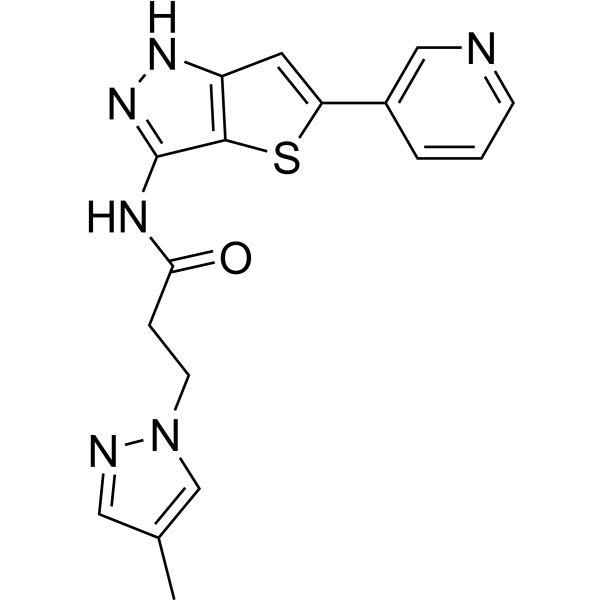
-
- HY-14728
-
|
R1439; RO0728804
|
PPAR
|
Metabolic Disease
|
|
Aleglitazar (R1439) is a potent dual PPARα/γ agonist, with IC50s of 38 nM and 19 nM for human PPARa and PPARγ, respectively. Aleglitazar can be used for the research of type II diabetes .
|
-
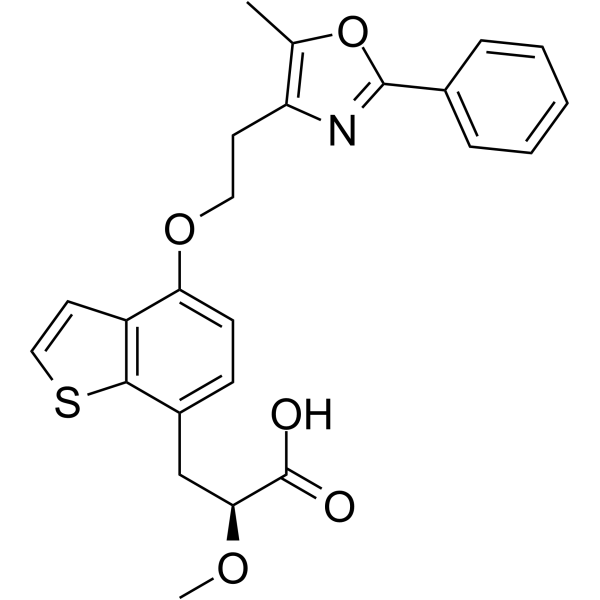
-
- HY-120160A
-
|
CP 86325 Sodium
|
PPAR
|
Neurological Disease
Metabolic Disease
|
|
Darglitazone Sodium, a thiazolidinedione, is an orally active, potent, and selective PPAR-γ (peroxisome proliferator-activated receptor) agonist. Darglitazone Sodium is effective in controlling blood glucose and lipid metabolism, and can be used for type II diabetes research .
|
-
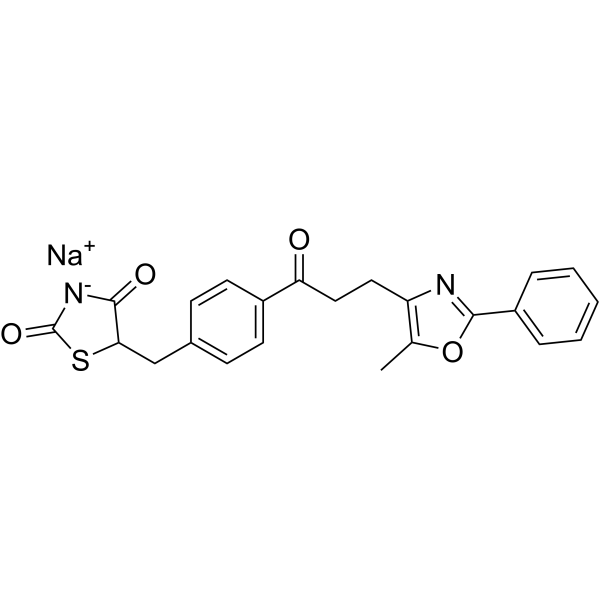
-
- HY-N8090
-
|
|
Others
|
Inflammation/Immunology
|
|
(3β,7β,12β,20Z)-3,7,12-Trihydroxy-11,15,23-trioxo-lanost-8,20-dien-26-oic acid, a lanostane triterpenoids, exhibits obvious NO inhibitory activity on n LPS-induced BV-2 microglia cells with an IC50 of 9.55 uM. (3β,7β,12β,20Z)-3,7,12-Trihydroxy-11,15,23-trioxo-lanost-8,20-dien-26-oic acid has anti-inflammatory activities .
|
-

-
- HY-P1047
-
|
[Pro18, Asp21] β-Amyloid (17-21)
|
Amyloid-β
|
Neurological Disease
|
|
β-Sheet Breaker Peptide iAβ5 is a potent degrader of cerebral amyloid-beta (Abeta). Abeta deposition is associatied with the Alzheimer disease (AD), due to its related toxicity linked to its beta-sheet conformation and/or aggregation. β-Sheet Breaker Peptide iAβ5 reproducibly induces in vivo disassembly of fibrillar amyloid deposits. Thus, β-Sheet Breaker Peptide iAβ5 prevents and/or reverses neuronal shrinkage caused by Abeta, and reduces the extent of interleukin-1beta positive microglia-like cells that surround the Abeta deposits. β-Sheet Breaker Peptide iAβ5 reduces the size and/or number of cerebral amyloid plaques in AD. β-Sheet Breaker Peptide iAβ5 labeled by hydrophobic benzyl alcohol (HBA) tag, can be used for quantitative assay by showing vivid blue color under acidic conditions .
|
-
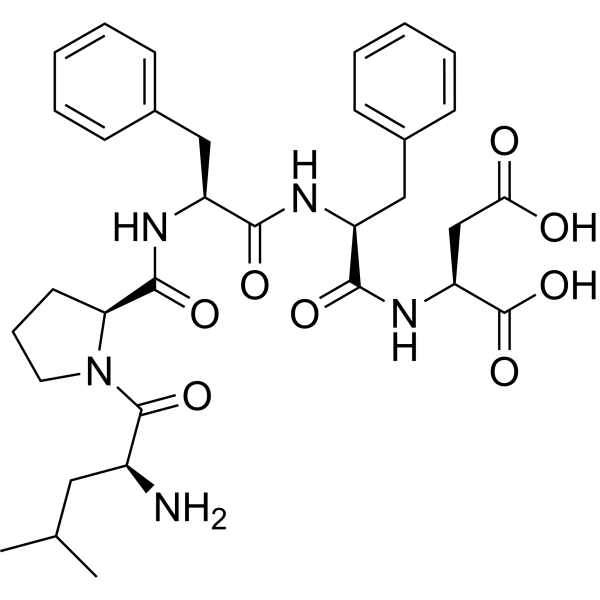
| Cat. No. |
Product Name |
Target |
Research Area |
-
- HY-P5762
-
|
PNX-14
|
GnRH Receptor
|
Neurological Disease
|
|
Phoenixin-14 (PNX-14) is one of the endogenous active isoform, and generates anxiolytic effect via the activation of the AHA GnRH system in mice. Phoenixin-14 inhibits ischemia/reperfusion-induced cytotoxicity in microglia .
|
-
- HY-P1242
-
|
|
Peptides
|
Inflammation/Immunology
|
|
NEP(1-40) is a Nogo-66 receptor (NgR) antagonist peptide, reversing the injury-induced shift in distribution of microglia morphologies by limiting myelin-based inhibition .
|
-
- HY-P1242A
-
|
|
Peptides
|
Inflammation/Immunology
|
|
NEP(1-40) TFA is a Nogo-66 receptor (NgR) antagonist peptide, reversing the injury-induced shift in distribution of microglia morphologies by limiting myelin-based inhibition .
|
-
- HY-P5544A
-
|
N-Acetylmuramyl-L-Ala-γ-D-Glu-meso-diaminopimelic acid TFA
|
NOD-like Receptor (NLR)
|
Others
|
|
M-TriDAP (N-Acetylmuramyl-L-Ala-γ-D-Glu-meso-diaminopimelic acid) TFA is a NOD1/2 agoist and biological active peptide .
|
-
- HY-P5121
-
|
|
Peptides
|
Cardiovascular Disease
|
|
γ-Fibrinogen377-395 is a fibrinogen-derived inhibitory peptide, as well as fibrinogen epitope. γ-Fibrinogen377-395 blocks microglia activation and inhibits fibrin-Mac-1 interactions in vitro, and suppresses experimental autoimmune encephalomyelitis (EAE) in mice in vivo. γ-Fibrinogen377-395 can be used for research in multiple sclerosis (MS), and other neuroinflammatory diseases associated with blood-brain barrier disruption and microglia activation .
|
-
- HY-P5121A
-
|
|
Peptides
|
Cardiovascular Disease
|
|
γ-Fibrinogen377-395 TFA is a fibrinogen-derived inhibitory peptide, as well as fibrinogen epitope. γ-Fibrinogen377-395 TFA blocks microglia activation and inhibits fibrin-Mac-1 interactions in vitro, and suppresses experimental autoimmune encephalomyelitis (EAE) in mice in vivo. γ-Fibrinogen377-395 TFA can be used for research in multiple sclerosis (MS), and other neuroinflammatory diseases associated with blood-brain barrier disruption and microglia activation .
|
-
- HY-P3908
-
|
|
Amyloid-β
|
Neurological Disease
|
|
FITC-β-Ala-Amyloid β-Protein (1-42) ammonium is a FITC tagged Aβ1-42 monomer peptide. Aβ1-42 plays a key role in the pathogenesis of Alzheimer’s disease .
|
-
- HY-P1047
-
|
[Pro18, Asp21] β-Amyloid (17-21)
|
Amyloid-β
|
Neurological Disease
|
|
β-Sheet Breaker Peptide iAβ5 is a potent degrader of cerebral amyloid-beta (Abeta). Abeta deposition is associatied with the Alzheimer disease (AD), due to its related toxicity linked to its beta-sheet conformation and/or aggregation. β-Sheet Breaker Peptide iAβ5 reproducibly induces in vivo disassembly of fibrillar amyloid deposits. Thus, β-Sheet Breaker Peptide iAβ5 prevents and/or reverses neuronal shrinkage caused by Abeta, and reduces the extent of interleukin-1beta positive microglia-like cells that surround the Abeta deposits. β-Sheet Breaker Peptide iAβ5 reduces the size and/or number of cerebral amyloid plaques in AD. β-Sheet Breaker Peptide iAβ5 labeled by hydrophobic benzyl alcohol (HBA) tag, can be used for quantitative assay by showing vivid blue color under acidic conditions .
|
| Cat. No. |
Product Name |
Category |
Target |
Chemical Structure |
-
- HY-N3915
-
-

-
- HY-W670564A
-
-

-
- HY-N10458
-
|
|
Sesquiterpenes
|
NF-κB
|
|
Asperbisabolane L, a sesquiterpenoid, exerts the anti-inflammatory activity by inhibiting the NF-κB-activated pathway. Asperbisabolane L inhibits the translocation of NF-κB from cytoplasm to the nucleus. Asperbisabolane L also inhibits NO production in LPS-activated BV-2 microglia cells .
|
-

-
- HY-N7018
-
-

-
- HY-N10782
-
-

-
- HY-N9675
-
-

-
- HY-N6261
-
-

-
- HY-N8104
-
-

-
- HY-111815A
-
-

-
- HY-111815
-
-

-
- HY-N3814
-
-

-
- HY-N8090
-
|
|
Triterpenes
Microorganisms
Classification of Application Fields
Terpenoids
Source classification
Disease Research Fields
Inflammation/Immunology
|
Others
|
|
(3β,7β,12β,20Z)-3,7,12-Trihydroxy-11,15,23-trioxo-lanost-8,20-dien-26-oic acid, a lanostane triterpenoids, exhibits obvious NO inhibitory activity on n LPS-induced BV-2 microglia cells with an IC50 of 9.55 uM. (3β,7β,12β,20Z)-3,7,12-Trihydroxy-11,15,23-trioxo-lanost-8,20-dien-26-oic acid has anti-inflammatory activities .
|
-

| Cat. No. |
Product Name |
Chemical Structure |
-
- HY-B0763S1
-
|
|
|
Ibudilast-d7 is the deuterium labeled Ibudilast. Ibudilast (KC-404; AV-411; MN-166) is a cyclic AMP phosphodiesterase (PDE) inhibitor. Ibudilast has platelet anti-aggregatory effects. Ibudilast can be used for the research of asthma for its inhibitory effects on tracheal smooth muscle contractility. Ibudilast may be a useful neuroprotective and anti-dementia agent counteracting neurotoxicity in activated microglia[1].
|
-

-
- HY-B0763S2
-
|
|
|
Ibudilast-d7-1 is the deuterium labeled Ibudilast[1]. Ibudilast (KC-404;AV-411;MN-166) is a cyclic AMP phosphodiesterase (PDE) inhibitor. Ibudilast has platelet anti-aggregatory effects. Ibudilast can be used for the research of asthma for its inhibitory effects on tracheal smooth muscle contractility. Ibudilast may be a useful neuroprotective and anti-dementia agent counteracting neurotoxicity in activated microglia[2].
|
-

Your information is safe with us. * Required Fields.
Inquiry Information
- Product Name:
- Cat. No.:
- Quantity:
- MCE Japan Authorized Agent:


























































